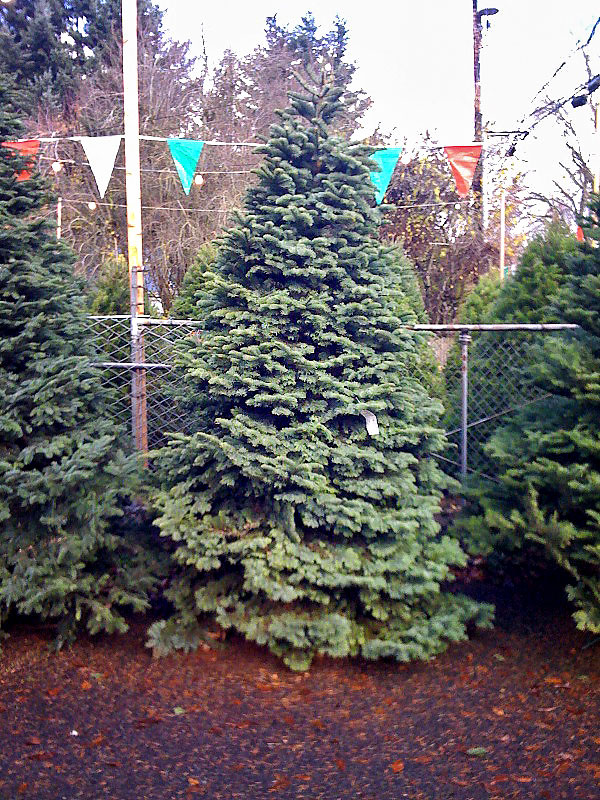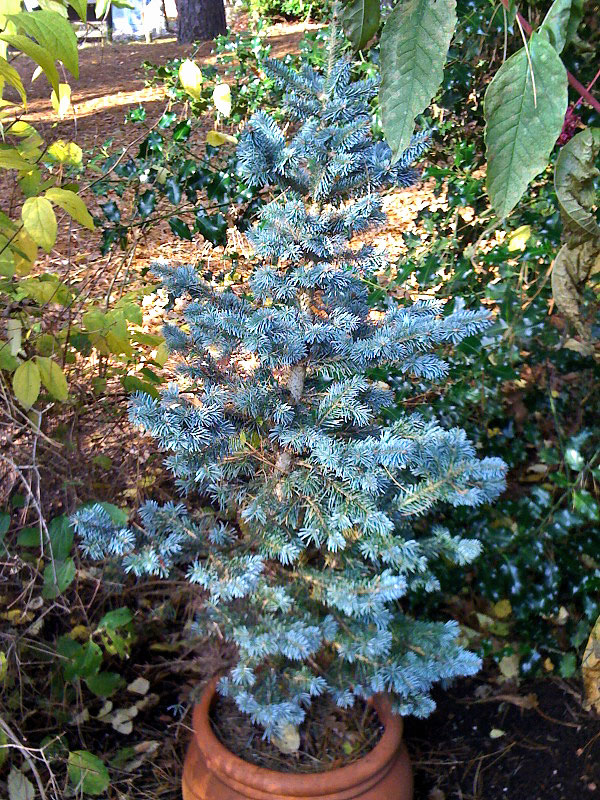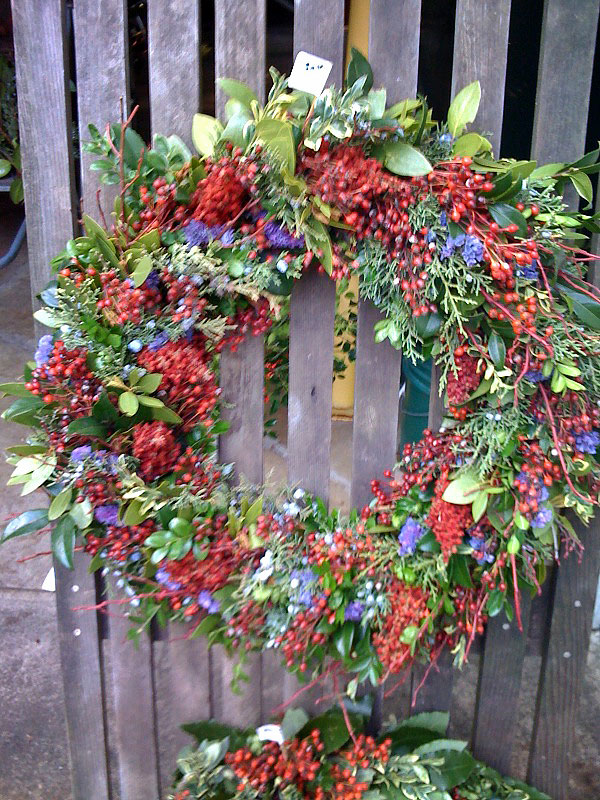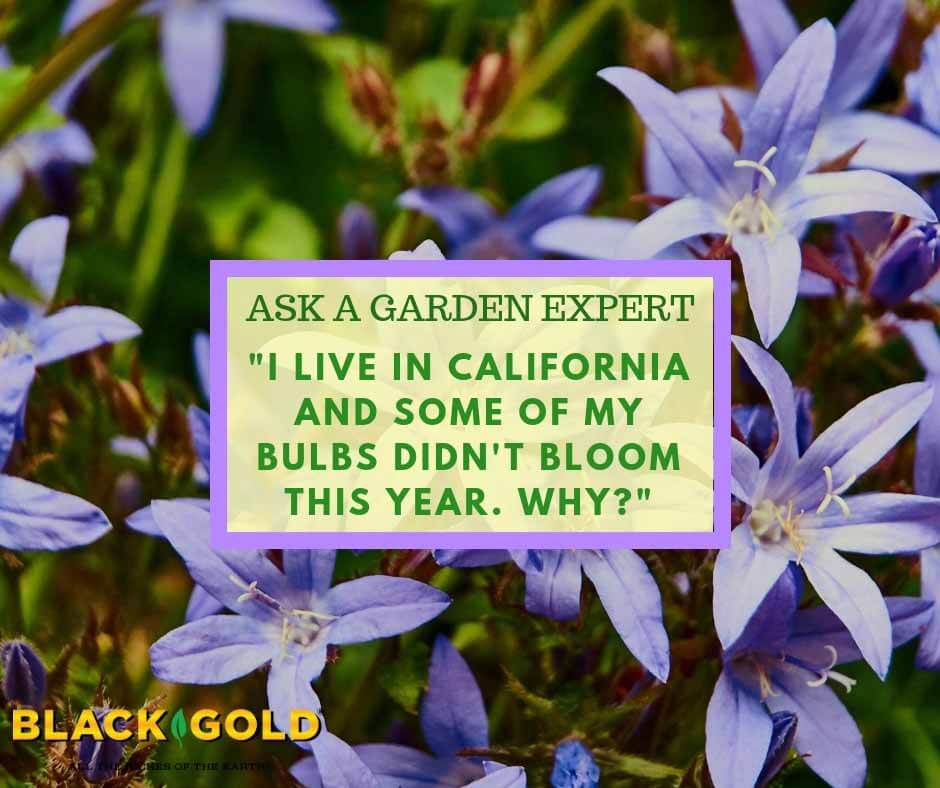 When buying a cut tree at a lot, keep in mind that the tree has probably been cut for several weeks and it could even be several months. When the tree is cut, it is a natural response for it to seal off the cut in order to conserve moisture. Since the butt end is sealed, it can only absorb a small amount of water, if any.
When buying a cut tree at a lot, keep in mind that the tree has probably been cut for several weeks and it could even be several months. When the tree is cut, it is a natural response for it to seal off the cut in order to conserve moisture. Since the butt end is sealed, it can only absorb a small amount of water, if any.
This is the reason it is so important to make a fresh cut of about an inch from the butt of the tree just before the tree is going to be taken indoors. Once this cut has been made, the tree should be placed in a bucket of fresh water or placed in the tree stand with fresh water. You may be amazed at how much water the tree will absorb especially during the first few days. Research that I have seen indicates that there is no need to add a preservative, fresh water works just fine. Check the water reservoir in the tree stand several times a day and refill as necessary. If the water level goes below the butt end of the tree, it will begin to seal itself up and this will prevent uptake of water. It is also a good idea to place your tree where it will not be getting warm air from a heater vent.
Living Christmas Tree

The term ‘living’ tree refers to a tree that is alive and growing and in a nursery container. This is in contrast to a ‘cut’ tree. Check out your local garden center for the varieties of living trees available. Growing in a container with soil, a living tree will be heavy to move around and since they will need to be watered, be sure to have a waterproof saucer under the container.
Bringing the tree from outdoors to the warm temperatures of a house can be quite a shock. If there is enough time, a good idea is to place it in a cool garage for a couple of days before bringing it indoors. Place the tree by a window and away from any heat vent. If you are going to put lights on it, use those that do not get hot. Generally a ‘live’ tree should not be indoors more than 7-10 days.
When it is time to take it outdoors, if the temperatures are below freezing, it is a good idea to put the tree back into a garage for several days instead of taking it from a warm house to a freezing outdoors. Once the weather has warmed, the tree can then be planted. Another idea is to plant the tree in a nice container and keep it on a deck or patio and then bring it indoors as a Christmas tree for several years. Before planting, be sure to amend the planting area with
Black Gold Canadian Sphagnum Peat Moss Plus.
Wreaths from the Garden

There are some wonderful wreaths being offered for sale, many with fresh material from local growers. If you have a supply of greenery, wreaths can be fun to make and give as gifts especially when the materials are from your garden. Fir, pine and holly are traditional, but consider adding something new.
Many cotoneasters are covered with red berries at this time of year as is firethorn (Pyracantha coccinea). I have a friend that has a small business making wreaths and he uses juniper (nice fragrance and of course the blue berries make a nice contrast to the green of other plants), sumac flowers, evergreen Magnolia, Nandina, sweet bay, rose hips, Skimmia, and even dried hydrangea flowers that have a natural look. Most of these materials will hold up very well outdoors as long as they do not get wet from the rain.
Paperwhites
Paperwhite narcissus bulbs are very easy to force into bloom indoors. They will often bloom within 3-4 weeks of planting. All that is needed are healthy bulbs and some kind of dish or pot with no drainage. A traditional method is to put in a layer of gravel (many types available at garden centers especially for this purpose), place bulbs on top and bring water level just beneath the bulb. Place container by a window and keep water level constant.
One of the major drawbacks with forcing paperwhites is that they get tall and flop over. Some research from Cornell University indicates that by adding some ethyl alcohol will stunt the growth but you will still get the flowers. About a 5% (no stronger or it may burn plants) solution of ethyl alcohol is required, and so from a 40% distilled spirit such as gin, vodka, rum, etc, you would 1 part of the spirit and 7 parts of water. For this to work, add plain water as normal for the first week and then begin using the alcohol/water solution. Continue using this solution until the plants begin to bloom.
If you do not want to use ethyl alcohol you have for drinking, rubbing alcohol also works. It is about 70% alcohol so 1 part rubbing alcohol to 10-11 parts water would be appropriate. Do not use beer or wine as the sugars in them can cause some problems with plants. I tried this last year and it worked!
Enjoy the season!





